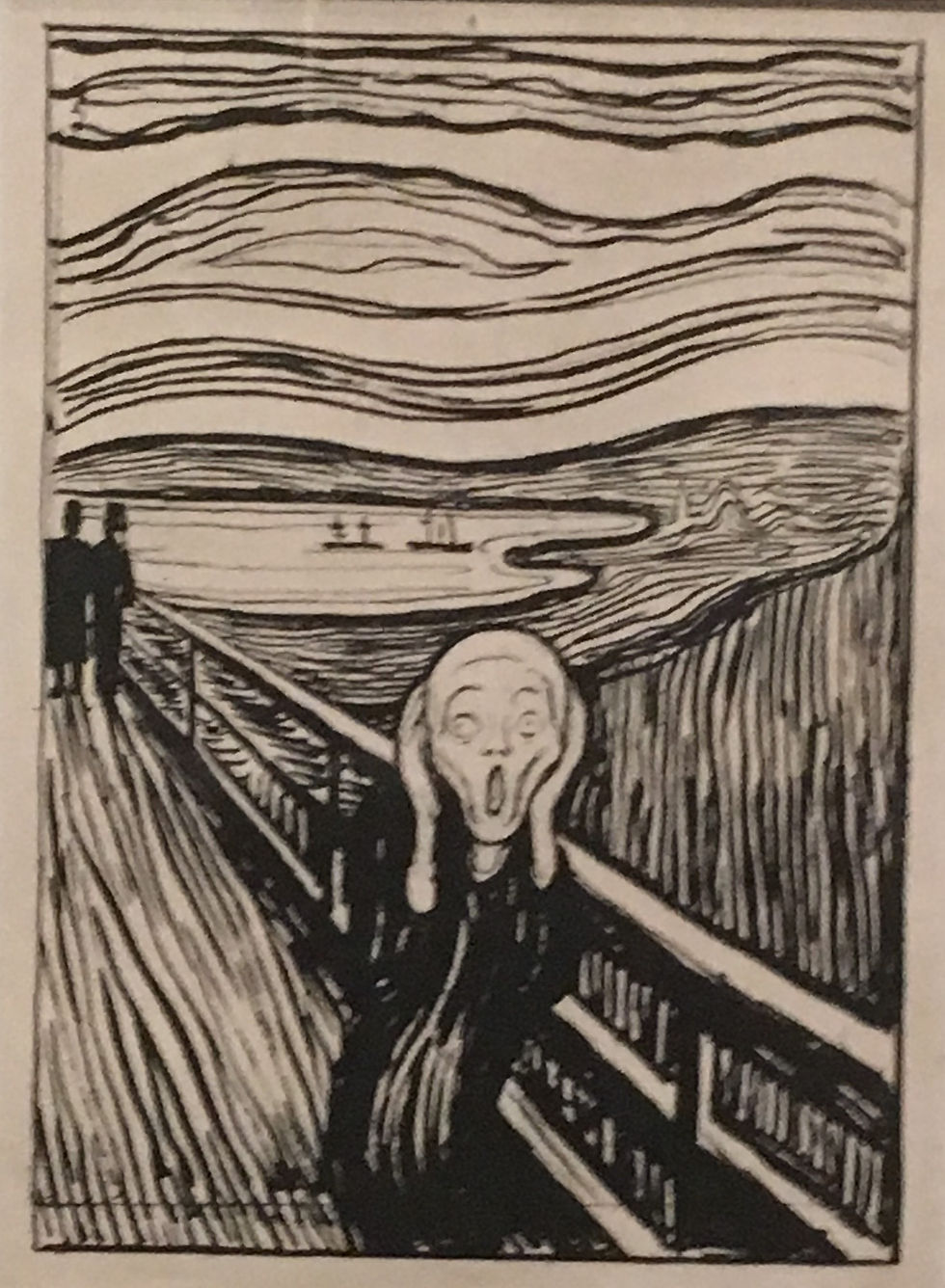Love and Angst - Edvard Munch at the British Museum
- Ricster

- Jul 11, 2019
- 3 min read
Updated: Jan 15, 2020

I first came across this print version of the scream in my local library. I must have been in my early teens. I had a visceral reaction to this image; it was shocking and disturbing.
Munch's work has the extraordinary ability to express psychological and emotional states. In viewing them we can actually re-experience those states,
The satisfaction for me comes from that identification. Listening to music as a rather self indulgent emotionally tortured adolescence- it wasn't the case that doomful music made one feel worse – a good dose of Joy Division gave a sense of beautiful identification; and that reduced the feeling of isolation. There is a touch of the histrionic in munch but he is always honest. I was so struck by the way his figures look straight out at you – full on– there is no artifice. He doesn't just capture the emotional contortions of the moment they also carry the ongoing dull ache. They are like the unrelenting drone of organ music.
Perhaps he is most powerful in his prints – they emphasis the flatness of the image and the sinuous contortion of line – that act as an emotional language – symbolist if you like or expressionistic according to your art historical tastes. It is the language of Van Gogh and Gauguin; and works on a deeper level than mere representation; such that we almost 'taste' the . It cfeelings that lay behind the images. Munch captures them and projects them back at us so that we share the experience.
In art historical terms Munch is classed as a Symbolism -he doesn't just show the expressionistic eruption he shows the ongoing dull broodings of neurosis. Except that The extreme distortions of the Scream pushed things to another level into true expressionism. On the painted version of The Scream Munch has scribbled: “Could only have been painted by a madman.”
Why celebrate these images? If they dwell on the unhealthy – the mad? Why do love and angst have to go together. The answer would be to go through this trauma – to a pure state of spiritual unconditional love – unfortunately it is hard to see how that state would inspire particularly interesting art.
He wasn't going to have an easy life given the circumstances and trauma he suffered as a child but it was a victorious life. He didn't die young – the usual cliché of the tormented artist – he lived to a good age. His was a classic case of pain and suffering being triumphantly transformed into art – a cliché too- but in his case as with Van Gogh a highly successful one.
Munch never married but he called his paintings his children and hated to be separated from them.


He captured the fear in attraction to womenthat is undeniably part of the male psyche. But he was no misogynist – you cannot doubt this with the sensitivity he demondstrates in his picture Puberty. He sees that woman also suffer.
The stuff that Munch exposes in his art is actually timeless. Dispute a great deal of social liberation many of these deep traumas still act out in our lives. We still suffer from the same stuff in our times in different ways. Now we are liberated from the stifling heavy religion of Munch's time – do we now do the dance of life in freedom? The same stuff that Munch painted is still playing out; permissiveness did not put the archetypal forces to rest – they still writhe trough our culture. Dispute all the rather smug humanistic secularism these dark places still echo.
I had to buy the excellent t£30 catalogue; call me old fashioned - but I avoided eye contact with all the Munch themed merchandise in the shop. It seemed rather disrespectful - maybe I'm being a bit precious in this regard but I will give Mr Munch the last word on his art:
There should be images of living people who breathe and feel and suffer and love—I shall paint a number of such pictures—people will understand the holiness of it, and they will take off their hats as if they were in a church
. Love and Angst is on at the British Museum until July 21st




Comments